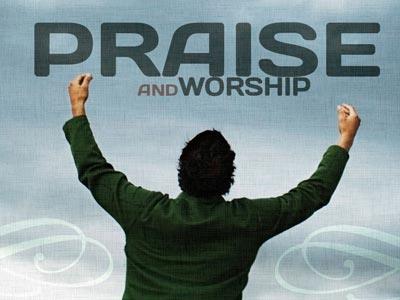-
A New ...
Contributed by Sermon Central on Oct 22, 2008 (message contributor)
A New Song?
The preface to this radically contemporary version of the Bible included this plea from the translators for patience and acceptance: a new translation, “deserveth much respect and esteem, but yet findeth cold entertainment in the world. It is welcomed with suspicion instead of love…. For, was there ever any-projected, that savoured any way of newness or renewing, but the same endured many a storm of gainsaying, or opposition?” (Those words are from the “Preface to the Reader” of the 1611 King James Bible.)
One example of opposition was the distinguished scholar and Puritan, Dr. Hugh Broughton. He said (about the King James Bible): “[It] bred in me a sadness that will grieve me while I breathe, it is so ill done. Tell His Majesty that I had rather be rent in pieces with wild horses, than any such translation by my consent should be urged upon poor churches…. The new edition crosseth me, I require it to be burnt” (Quoted in F. F. Bruce, History of the English Bible, 2002 reprint, 107). Broughton’s censure was surely affected by his disappointment in not being invited to join the translation committee, but he does remind us that church traditions die hard.
The same is true of music as translations. Listen to these complaints about a new musical form:
1) It is an unknown tongue.
2) It is not as melodious as the usual way.
3) There are so many tunes that we shall never learn them.
4) The practice creates disturbances and causes people to behave indecently and disorderly.
5) The names given the notes are bawdy, blasphemous.
6) It is needless since our fathers got to heaven without it.
7) It is a contrivance to get money.
8) They are a group of young upstarts that fall in with this way, and some of them are lewd and loose.
This list was compiled by Thomas Symmes in 1723 over the signing of psalms and hymns to four-part music rather than lining them out as had been done.
In his book, "I Don’t Like That Music" (great title, is it not?), Robert Mitchell observes that musical forms are often the “primary, familiar liturgical structure [for the service]. This element of worship must be recognized, protected, nurtured and maintained. However, an opposite dynamic is also present: ‘I know what I like!’ is often a way of saying, ‘I like what I know!’ Such a stance represents a commitment to the status quo and an attendant resistance to anything new that might disturb it…. We need to ask, ‘How did we get this way?’ and, ‘What might we do to expand appreciation and permit a richer, fresher experience of worship?’
From a sermon by Glenn Durham, "A Dynamic Church Worships Joyfully" 8/5/2008
Related Sermon Illustrations
-
A Man Was Charged Thursday (July 15) In The ...
Contributed by Davon Huss on Jul 19, 2004
A man was charged Thursday (July 15) in the murder of a West Bend (near Milwaukee) teenager. According to the charges, 18-year-old Katie Gensmer was killed so she wouldn’t talk about a past relationship. David Brace, 20, showed little emotion as he was led into court, 12 News Nick Bohr said. Now ...read more
-
A Mother Was Preparing Pancakes For Her Sons, ... PRO
Contributed by Lou Nicholes on Nov 8, 2004
A mother was preparing pancakes for her sons, Kevin, 5, and Ryan, 3. The boys began to argue over who would get the first pancake. Their mother saw the opportunity for a moral lesson. “If Jesus were sitting here, He would say, ‘Let my brother have the first pancake; I can ...read more
-
Forgiveness In Action PRO
Contributed by Paul Wallace on Sep 6, 2004
Forgiveness in Action Pastor Hayes a man in his middle forties, was well-loved by his congregation, and faithful to God and to his family. He enjoyed a successful ministry in an exuberantly vital, growing church. Just when everything seemed to be going well, a cloud came over this man and his ...read more
-
Save One More For Jesus PRO
Contributed by Robert Garrett on Aug 8, 2005
ILLUSTRATION “SAVE ONE MORE FOR JESUS” Rick Warren shares in his book “The Purpose Driven Life” about his dad who was a pastor for over fifty years serving mostly small rural churches. His dad was not simply a preacher but was a man with a mission. He loved taking teams of volunteers overseas ...read more
-
Alex Grant, Pioneer Missionary To The Straits ... PRO
Contributed by Eric Peloquin on Jun 23, 2005
Alex Grant, pioneer missionary to the Straits Settlements and China, once got up in a meeting in Singapore, and read solemnly Habakkuk 3:17— “Although the fig tree shall not blossom, neither shall fruit be in the vines, the labour of the olive shall fail, and the fields shall...yield no meat: the ...read more
Related Sermons
-
Saved To Sing Series
Contributed by Brian Bill on Mar 13, 2011
God's promises should cause us to praise Him.
-
True Worship
Contributed by Horace Wimpey on Jun 8, 2012
Only when we realize who we worship can we truly worship our God.
-
Worship Matters Series
Contributed by Tim Smith on Jul 1, 2012
There are five reasons why we worship and why it matters.
-
We Become Like We Worship
Contributed by Ken Pell on Jul 11, 2010
An underlying premise of The Revelation is that all humankind has a devotion to one God or another and we become like that which we worship.

 Sermon Central
Sermon Central





